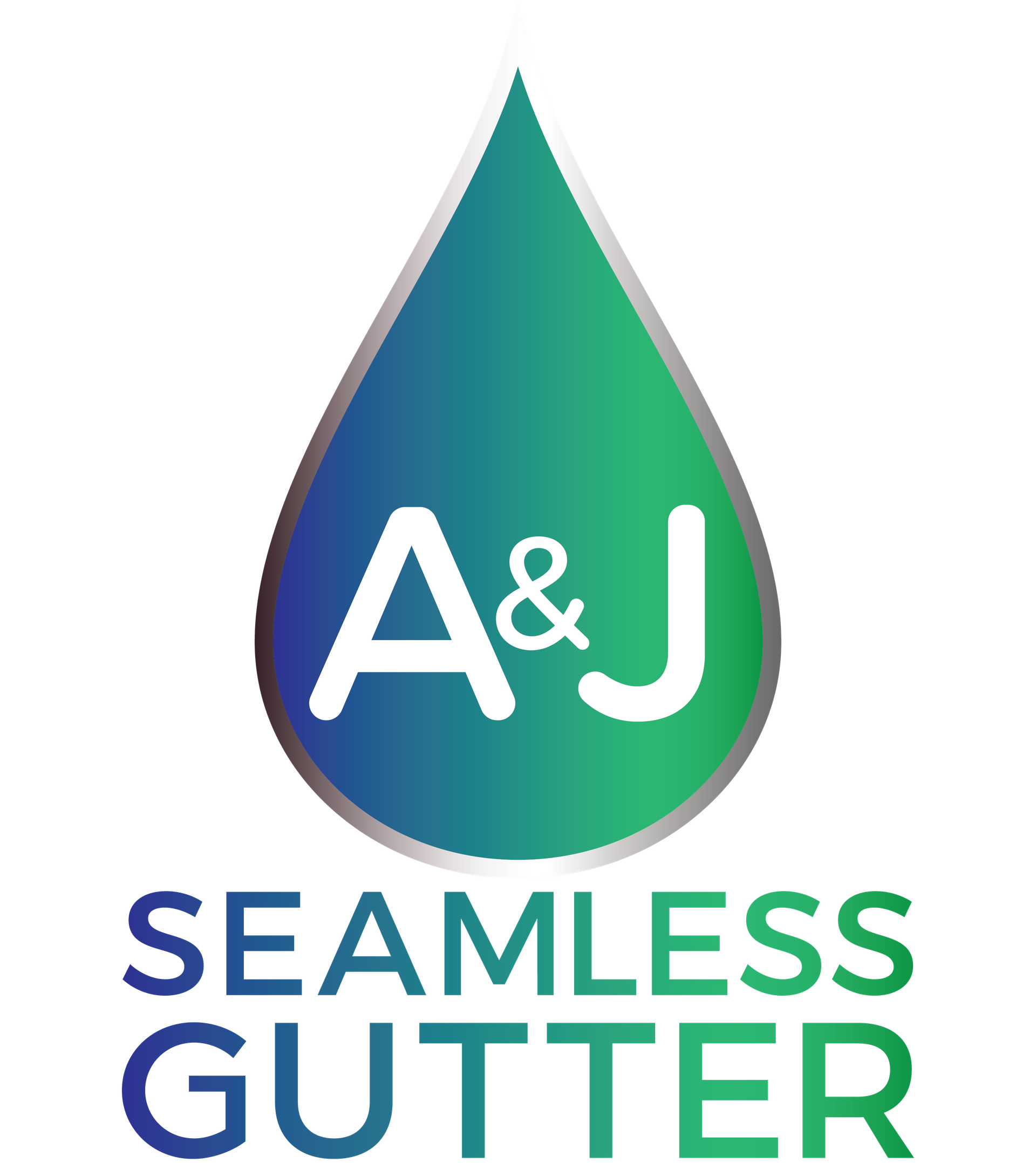Why Is My Gutter Leaking? The Seamless vs. Sectional Showdown
Nothing compromises the protection of your home faster than a leaking gutter. Whether it's a slow drip or a gushing stream, leaks mean water is dropping right beside your foundation, risking basement flooding and erosion.
In Northeast Ohio, leaking gutters are often a symptom of an outdated system—specifically, sectional gutters—which rely on numerous joints and seams that fail over time.
At A&J Seamless Gutter, we eliminate the problem at the source. Here is the undeniable case for why seamless gutters are the superior choice for your Akron-area home.
1. Zero Leaks, Zero Worry
The only seams in a seamless system are at the inside/outside corners and at the downspout outlets—meaning the potential for leaks is reduced by over 90% compared to sectional gutters. This dramatically improves the reliability and longevity of your drainage system.
2. Custom-Fit Protection
A seamless gutter is a custom-fit gutter. It is designed to follow the exact contours of your roof, ensuring a professional, clean installation and maximum water flow efficiency to the downspouts. This custom fit is not something you can achieve with store-bought sections.
3. Superior Durability and Aesthetics
Without rough joints and exposed seams, seamless gutters look cleaner, blend better with your home's trim, and are less prone to snagging debris. They are stronger and more resistant to warping and sagging over their 20+ year lifespan.
Investing in a new, custom-rolled seamless gutter system from A&J is the only way to achieve a permanent, leak-free solution.
Stop the drips for good. Call A&J Seamless Gutter at 330-724-1060 today for a free, on-site estimate!
In Northeast Ohio, leaking gutters are often a symptom of an outdated system—specifically, sectional gutters—which rely on numerous joints and seams that fail over time.
At A&J Seamless Gutter, we eliminate the problem at the source. Here is the undeniable case for why seamless gutters are the superior choice for your Akron-area home.
Part 1: The Problem with Sectional Gutters
Sectional gutters are sold in pre-cut, short lengths (usually 10 feet) that are bolted, riveted, or screwed together on-site.-
The Weak Link: The Seam: Every joint between two sections requires a connecting piece and sealant. Over time, the sealant degrades due to UV exposure and the constant freeze-thaw cycles of an Akron winter.
- Result: The seams fail, crack open, and become the primary source of leaks, drips, and rust spots along your roofline.
- Debris Collection: The inside of a sectional connection is rough, creating snags where leaves and debris catch. These snags accelerate clogs, pooling water, and premature rust.
- Expansion and Contraction: Since the lengths are fixed, they have little room to expand and contract with temperature changes, leading to warping and pulling away from the fascia board.
Part 2: The A&J Seamless Advantage
Seamless gutters are exactly what they sound like: they have no seams along the straight runs. We bring our advanced gutter machine directly to your location and custom-roll the gutter out of a single piece of aluminum coil, precisely matching the length of your home’s roofline.1. Zero Leaks, Zero Worry
The only seams in a seamless system are at the inside/outside corners and at the downspout outlets—meaning the potential for leaks is reduced by over 90% compared to sectional gutters. This dramatically improves the reliability and longevity of your drainage system.
2. Custom-Fit Protection
A seamless gutter is a custom-fit gutter. It is designed to follow the exact contours of your roof, ensuring a professional, clean installation and maximum water flow efficiency to the downspouts. This custom fit is not something you can achieve with store-bought sections.
3. Superior Durability and Aesthetics
Without rough joints and exposed seams, seamless gutters look cleaner, blend better with your home's trim, and are less prone to snagging debris. They are stronger and more resistant to warping and sagging over their 20+ year lifespan.
The Bottom Line: Stop Patching, Start Protecting.
If you are constantly repairing or re-caulking leaky seams on an old sectional gutter system, it's a sign that the system is failing. That leaking water is already damaging your fascia board and threatening your foundation.Investing in a new, custom-rolled seamless gutter system from A&J is the only way to achieve a permanent, leak-free solution.
Stop the drips for good. Call A&J Seamless Gutter at 330-724-1060 today for a free, on-site estimate!
